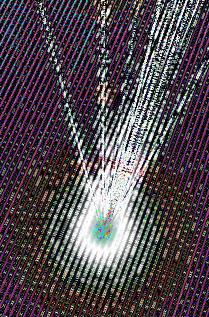Odd atomic context created
 Australian researchers have helped demonstrate a key element of quantum computing.
Australian researchers have helped demonstrate a key element of quantum computing.
An international team has produced what might be the most comprehensive demonstration of quantum contextuality ever.
Contextuality is a quantum phenomenon that contradicts classical physics and befuddles everyday intuition.
CSIRO’s Dr Markus Jerger describes the phenomenon by comparing it to Christmas Day.
“Imagine you and your family are gathered together to open gifts. You would be surprised if the contents of your gift were different depending on whether it is your son who is opening his present or your daughter who is opening her present at the same time as you.”
“In the same way the joint opening of different pairs of gifts affects their contents, a measurement of a quantum system affects the outcome of other measurements, even if they seem to be totally independent from each other. This is known as quantum contextuality.”
Contextuality has previously been shown in systems using trapped ions, photons and spins, but experimental loopholes remained in those experiments. This new experiment used superconducting circuits specifically to close those loopholes.
“By closing the loopholes, we demonstrated contextuality in the most convincing way without using additional assumptions and excluding explanations of the experimental results by other quantum properties.”
As contextuality is closely linked to the power of a quantum information processing, this experiment also confirms that superconducting quantum circuits are well set to build a quantum computer.
The study, titled ‘Contextuality without nonlocality in a superconducting quantum system’, has been published in Nature Communications.







 Print
Print